Mississippi’s 6 venomous snakes: How to identify them and what to do if you are bitten
Snakes can be encountered at any time of year in Mississippi, but spring through fall is a more active time of year for them.
More than 50 snake species can be found in the state, so if you spend time in the outdoors, there’s a chance you’ll come across one. Of those, only six are venomous, but some are very common.
According to the National Institute of Occupational Safety and Health, an estimated 7,000 to 8,000 people are bitten by venomous snakes in the US each year. However, only about five of those bites result in death.
In Mississippi, fatal bites appear to be extremely rare. One of, if not the only, death in decades came in 2000 when the Brookhaven Daily Leader reported the death of Tommy Tanksley, 80, of Monticello.
According to the article, Tanksley was bitten by a rattlesnake and while driving to a hospital, he was involved in an accident. It was unclear if the bite caused his death or contributed to it.
Even though the odds of dying from a venomous snake in Mississippi are extremely low, no one wants to get bitten. Bites are painful and treatment can cost hundreds of thousands of dollars.
So, how do you know if you’ve come across a venomous snake? Here’s what they look like, their habits and where they are typically found according to the Mississippi Department of Wildlife, Fisheries and Parks.
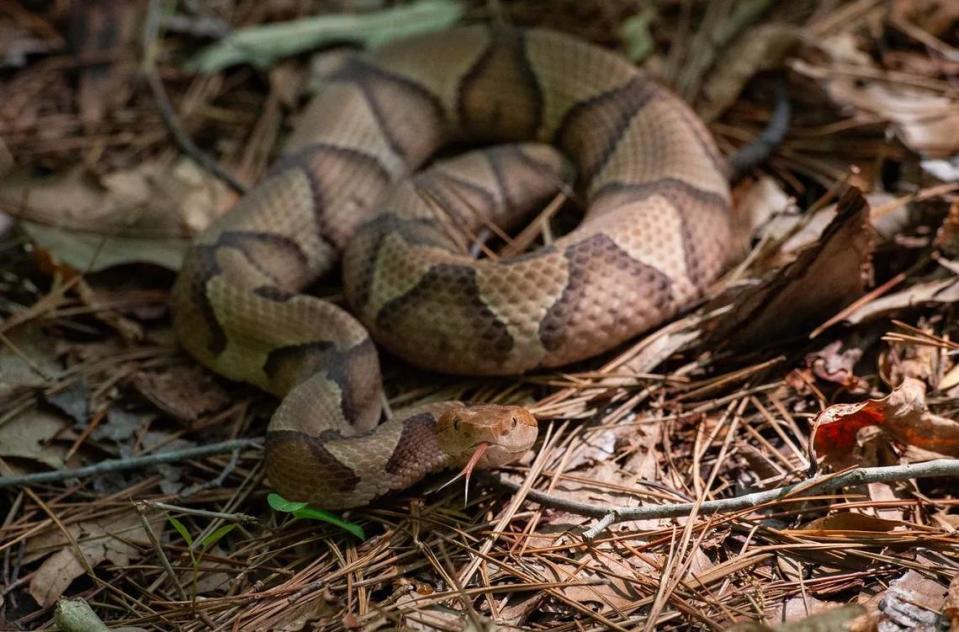
Copperhead
Appearance: Copperheads average 2-3 feet in length and have hourglass shaped bands that are often irregular or broken. The pattern is often compared to Hershey’s Kisses. The ground color is tan or beige and the bands are darker. Juveniles have a yellow tail that darkens with age.
Habitat and range: Copperheads are one of the state’s most common snakes and are found throughout the state except the immediate coast and barrier islands. They can be found in hardwood forests, pine country, old fields, bottomlands and even subdivisions.
Reaction to human encounters: Copperheads tend to lay motionless or flee when approached by people. Bites generally occur when they are touched or stepped on.
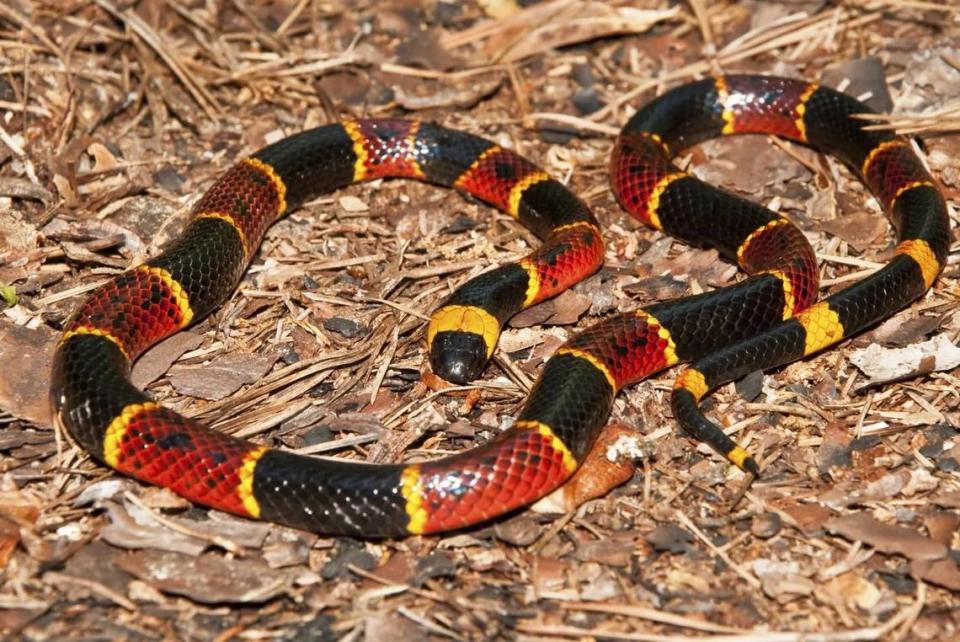
Coral snake
Appearance: Coral snakes average 2-3 feet in length with cylindrical bodies and small heads. They have wide black and red rings separated by thin yellow bands. Other species such as the scarlet kingsnake mimic the pattern, but their red and yellow bands do not touch each other.
Habitat and range: Coral snakes can be found in sandy pinewoods of South and Southeast Mississippi.
Reaction to human encounters: Coral snakes are secretive and encounters with humans are uncommon. Bites generally happen when they are handled, touched or pinned. Bites are considered a life-and-death situation, but they are not 100% fatal.
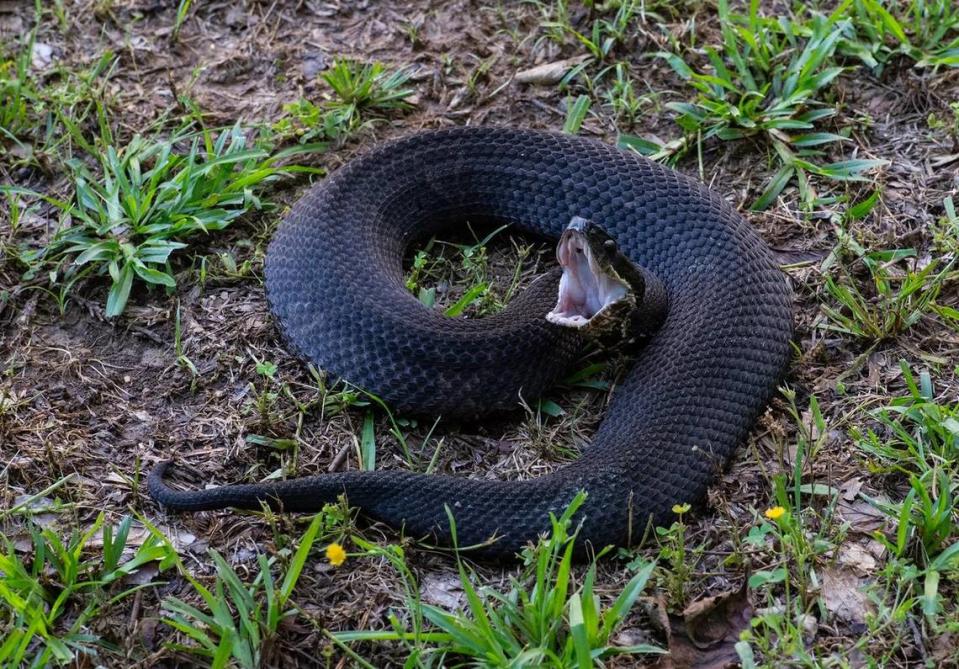
Cottonmouth
Appearance: Cottonmouths are heavy-bodied snakes with an average length of 2 1/2 feet-4 feet. Color can vary from brown to almost black with indistinct bands. Juveniles are more reddish or pink in color and like juvenile copperheads, have yellow tails.
Habitat and range: Cottonmouths can be found in or near almost any aquatic environment throughout Mississippi.
Reaction to human encounters: Cottonmouths are known for gaping their mouths when threatened and flashing the white interior as a warning. Bites are considered serious.
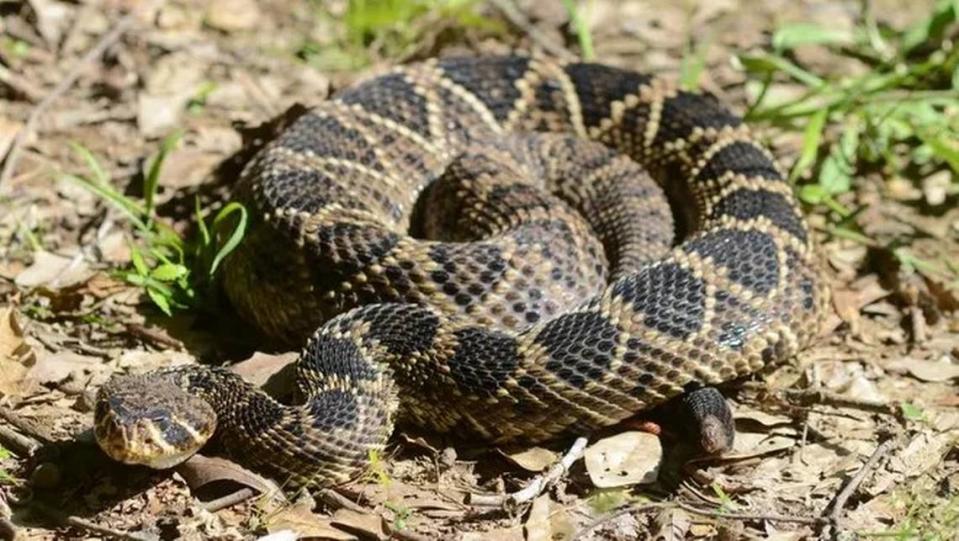
Eastern Diamondback Rattlesnake
Appearance: The eastern diamondback rattlesnake is Mississippi’s largest snake averaging 4 feet-5 1/2 feet, but have been documented up to nearly 8 feet in length. They have large heads and massive bodies that are medium brown or tan with large dark diamonds bordered by a row of lighter scales.
Habitat and range: Once common in the longleaf pine forests of South Mississippi, habitat destruction, persecution and road mortalities have eliminated them from most of their historic range in the state. They are now only found in Mississippi in the southeast portion of the state. They are typically found near logs, tree stumps and gopher tortoise burrows.
Reaction to human encounters: Eastern diamondbacks will usually remain motionless if approached, but will rattle, blow loudly and strike if approached too closely.
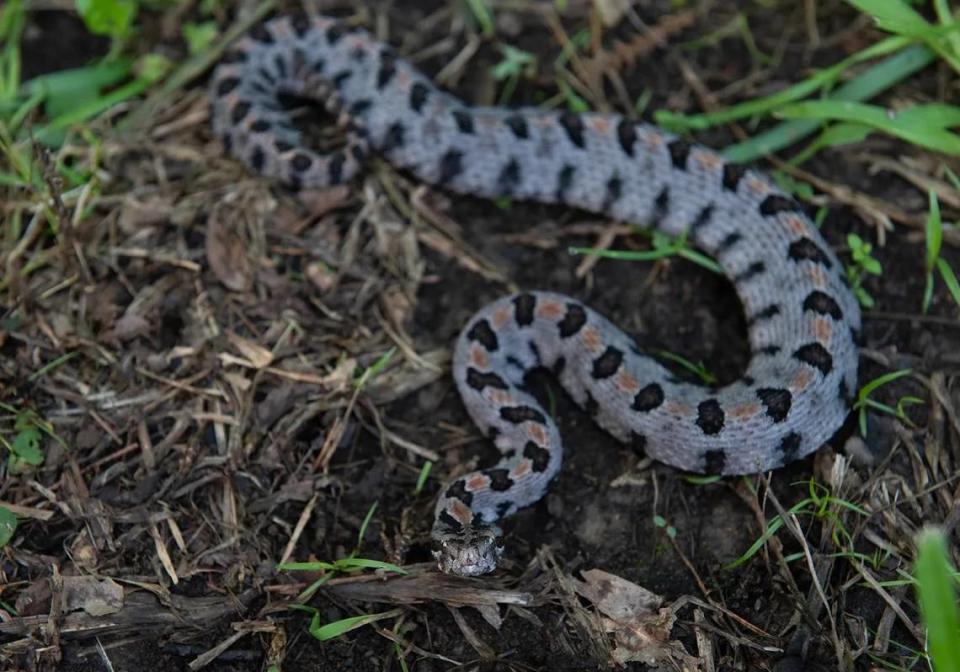
Pygmy rattlesnake
Appearance: Pygmy rattlesnakes, or ground rattlers as they are often called, average 18 inches to 20 inches with a row of dark spots down the middle of the back and alternating rows along each side. Their rattles are small and sometimes missing due to breaking off.
Habitat and range: Pygmy rattlesnakes are found in most of Mississippi except in the Delta and along the Mississippi River. They prefer flatwoods, pine forests, hardwood forests and swamp environments.
Reaction to humans: Bites from pygmy rattlesnakes are fairly common in South Mississippi and although their venom is considered highly toxic, their small size reduces the amount of it. Even so, like any other venomous snakebite, theirs is considered serious.
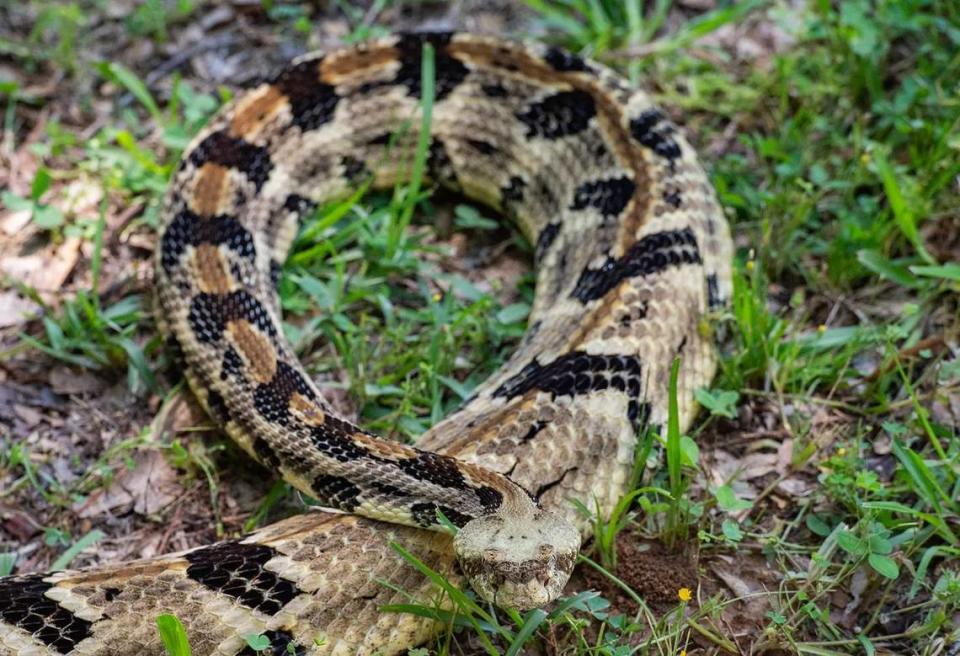
Timber rattlesnake
Appearance: Timber rattlesnakes, sometimes called canebrake rattlesnakes, average 3 feet to 4 1/2 feet in length. Their background color is gray to tan with dark wavy bands and a solid black tail. They are proportionately smaller than diamondback rattlesnakes.
Habitat and range: They inhabit forests and river bottoms throughout the state except on the immediate coast. Like the diamondback, they have been extirpated from much of their historic range and numbers are in decline.
Reaction to humans: Timber rattlesnakes are considered calm and slow to defend themselves. They will typically remain motionless or retreat. Bites typically come from people attacking them or handling them.
What to do if you’re bitten
If bitten by a venomous snake, call 911 for medical treatment immediately. While waiting, the Mayo Clinic recommends the following.
Move far away from the snake.
Stay still and calm.
Remove any jewelry, watches or tight clothing before swelling starts.
Sit or lie down so that the bite is in a neutral, comfortable position.
Clean the bite with soap and water. Cover or wrap it loosely with a clean, dry bandage.
What not to do if bitten
According to the Mayo Clinic, these are things you shouldn’t do if bitten by a venomous snake.
Don’t use a tourniquet or apply ice.
Don’t cut the bite or try to remove the venom.
Don’t drink caffeine or alcohol.
Don’t take pain-relieving medicine, such as aspirin, ibuprofen (Advil, Motrin IB, others) or naproxen sodium (Aleve). Doing so can increase your risk of bleeding.
Don’t try to catch or trap the snake. Try to remember its color and shape so that you can describe it. If possible, take a picture of the snake from a safe distance. Knowing what kind of snake bit you can help with treatment.


